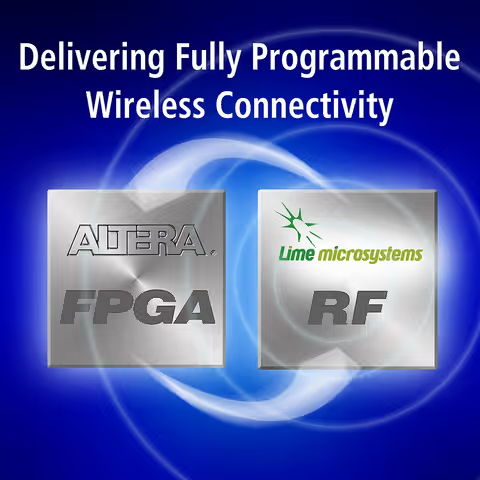
Programmable RF Meets Programmable Logic
Published in EE Times
Written by Paul Dillien, Principal, High Tech Marketing
Recently, I wrote an article about what's happening in the single-chip programmable RF space. Well, I just saw this press release that adds a very interesting new twist to the story. Altera has announced that it is making an equity investment in Lime Microsystems -- the creator of the Field Programmable RF (FPRF) chips that are popping up all over the place. So, how might this impact the design community?
From a hardware perspective, there are already boards available that combine an Altera FPGA and the original Lime device, such as the very popular "bladeRF" from Nuand. No doubt, there will be a raft of boards featuring the new Lime chip -- the LMS7002M -- to exploit MIMO technology. However, I think that the biggest innovations will be in design support.
Altera has embraced OpenCL as a design methodology to raise the level of abstraction of hardware design. A key target is to enable software engineers to design and build hardware systems that use both processors and FPGAs. The application of OpenCL to those Altera products which combine hard ARM cores with programmable fabric -- such as Cyclone V SE and Arria 10 SX devices -- is obvious.
What is unclear to me is if this might be extended so that the OpenCL code could program the ARM processor to address and control the Lime FPRF chip. That sounds like a fascinating prospect for a Software Defined Radio (SDR) or a Cognitive Radio application. I can envision the ARM core issuing instructions to scan a specific frequency band, and the combined FPGA and FPRF hardware reporting back the instantaneous status. I confess that I have no direct experience of using OpenCL, and so would invite readers to comment.
Another boost for the design community will be via open-source. Lime has been a strong advocate (see http://myriadrf.org/), and the Altera press release confirms that both companies will co-operate to produce optimized reference designs. The promise is that the portal will also include software stacks and drivers. Given the complexity of MIMO systems, this level of support can only help accelerate the implementation and adoption of this technology.
It is interesting to speculate as to whether or not we will see a combined FPGA and FPRF product. A package-on-package (PoP) solution is one option. It would allow the FPRF chip to be combined with a range of different FPGA sizes and to cater for different system needs. However, my take is that the most probable solution would be as a 2.5/3D packaged combo. Both TSMC and Intel are open to Altera for packaging. The FPGAs that Intel will fabricate (Stratix 10) will be "high end" and perhaps best-suited to large infrastructure applications.
On the other hand, TSMC is the source for all of the current Altera products, and will be used by the new Lime chip too, so it looks to be a natural choice. The current TSMC solution uses a silicon interposer onto which the separate dice are mounted. (That's the same solution that FPGA rival, Xilinx, has used to build multi-die products). TSMC is bullish about its packaging technology, and is reported to forecast $800 million in revenue from such products in 2016. That level of production would drive the cost down and open up many new applications for the technology.
There are obstacles to producing a single chip combining FPGA and FPRF, not least being the mask costs and modifications to the design software. It would need some very high volume applications -- such as small cells -- to drive this.
Unsurprisingly, base stations and small cells are listed in Altera's press release, along with enterprise systems and military communications. What is perhaps less obvious is that the list of potential applications includes industrial, machine-to-machine (M2M), and even medical. This serves to emphasize just how ubiquitous wireless communications is becoming.
Indeed, this may well explain why Altera chose to partner and invest in Lime. I have been involved with FPGAs for over two decades and have seen lots of acquisitions and investments. Mostly, the deals have involved acquiring a competitor, buying in technology, or investing in advanced software capabilities. I was impressed with the strategic thinking behind the acquisition by Altera of Enpirion because that directly addresses a key issue with many FPGA customers; i.e., minimizing power consumption. This latest equity investment represents an FPGA company partnering with another company that has synergistic products to bring enhanced solutions to the market. Perhaps this is the start of a new trend.